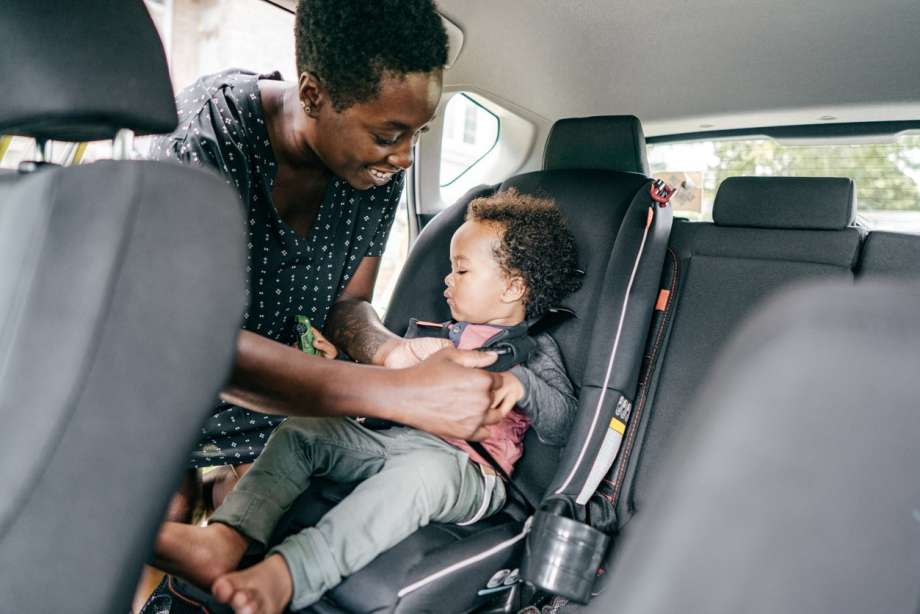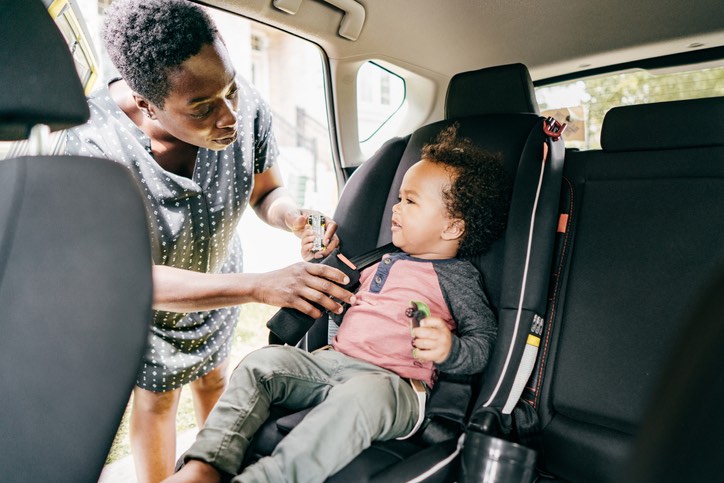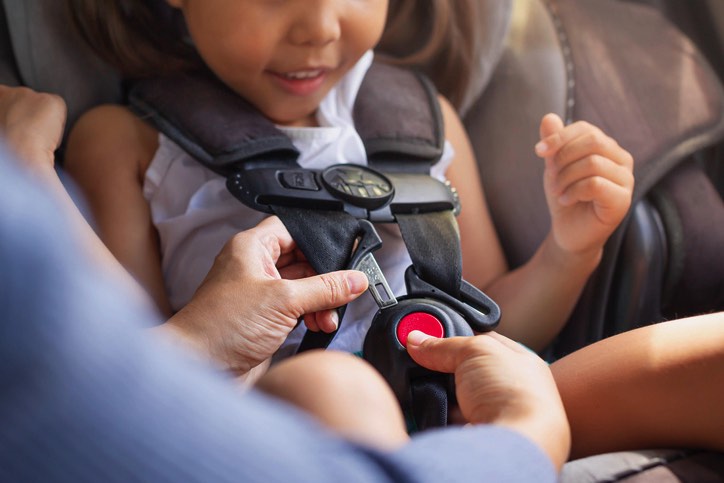When Can My Child Ride without a Booster Seat?

If you have a little one or little ones, then you have likely dealt with the world of car seats and booster seats. Guidelines around age and weight limits are constantly changing regarding different types of car and booster seats, and sometimes don’t match up with manufacturers’ recommendations or even state laws. So, how do you know what is best? We are going to talk about what is best for age, weight, and height when it comes to child passenger safety laws.
Car Seat and Booster Seat Safety

The American Academy of Pediatrics (AAP) released new guidelines when it comes to rear-facing seats. It is recommended that your child be at least 2 years of age before switching to forward-facing seats. Of course, this means they will still be safest in that same car seat because they are still too small for a shoulder belt or lap belt. However, they also say to hold off until your child meets the height and weight limit as well. Staying rear-facing until they are at least 40 lbs drastically reduces the risk of injury during a car crash.
As far as transitioning from forward-facing to a booster seat, the AAP also says to wait until the child outgrows their convertible car seat in both height and weight. This information can also be found in the manufacturer’s instructions.
Weight limits and minimums can vary between car seats and booster seats. Most booster seats are made for kids starting at 40 lbs, and some car seats have that as the weight maximum as well. There are some out there that are equipped for up to 60 lbs. This information is easy to find based on the brand and model of car seat your child uses or in the owner’s manual.
State Laws

There are federal laws in place to keep your child safe when riding in a car. All young children riding in car seats and booster seats must be buckled in properly and the seat must be installed properly as well. However, the guidelines regarding your child’s size and age can vary from state to state. Let’s talk about some examples just to see how different these laws can be.
Florida: In Florida, your child must be in a car seat up to 3 years of age. It doesn’t go into specifics about rear-facing and forward-facing. As far as booster seats go, children ages 4 and 5 must use one. No age beyond that is mentioned, meaning that it is legal in Florida for your child to use a shoulder belt starting at 6 years of age.
California: The laws in California coincide with the weight limits of your child’s car seat or booster seat. However, children who are 2 years of age or under 40 lbs should continue to be rear-facing. They can forward face once they are above the 40 lb mark. Your child can transition to a booster seat once they outgrow the weight and height of their car seat. When it comes to discontinuing booster seats, your child needs to be at least 8 years old or 4’9” tall to use a lap belt without a booster.
Massachusetts: Similar to California, your child must be secured in a child safety seat until they are at least 8 years old. There are no specific laws on when to switch them from a car seat to a booster seat, but they must be 4’ 9” before switching to a lap belt.
FAQ

When can my child safely stop using a booster seat?
Although this isn’t clear in all state laws, federal laws have recommendations and so does the AAP. As stated above, when your child is 8 years old or 4’9” tall, it is safe to transition them out of a booster seat. Even though it isn’t illegal to make the switch early, the bigger your child is, the safer they will be using a standard seatbelt. A good rule of thumb is if your child’s knees bend at the edge of the seat and touch the floor, they likely can switch to just an adult seatbelt.
Should my infant use an infant car seat or a convertible car seat?
When shopping for a baby’s first car seat, most brands coincide with federal guidelines. There is no best car seat, but there are some great brands out there that a lot of parents love. It is not necessary to buy an infant car seat unless you are interested in a stroller travel system. Most convertible car seats are safe for use starting at 5 lbs, so it comes down to personal preference. Both types can be used as rear-facing car seats but the infant car seat won’t be used as a forward-facing car seat.
Do I need a high-back booster or a backless booster?
High-back boosters offer a bit more protection. They are made with shock-absorbing sides and they are classified as belt-positioning booster seats because it ensures that the seat belt stays in the correct position. Older children prefer backless boosters but they should only be used if your backseat has a headrest. Your child also needs to be tall enough and their ears must reach the top of the backseat.
Should my 5-year-old be in a car seat or booster?
This will mostly depend on your child’s weight, and all kids are different. Most booster seats have a minimum weight requirement of 40 lbs. Some car seats have a forward-facing weight limit of 65 lbs. Check out the owner’s manual of your car seat to decide the best choice.
Can I place a booster seat in the middle seating position?
Since it only has a lap belt and no shoulder belt, it is safe to save this seat for a car seat. Booster seats use the seat belt so you need to choose the right or left back passenger seats.
When can my child ride in the front seat?
It is recommended by the National Highway Traffic Safety Administration (NHTSA) that you keep children in the back seat until they are at least 13 years old. This includes all car seats. They should never be placed in front of the passenger airbag. Your motor vehicle must have a backseat so do not transport young children or infants in a pickup truck with no backseat. That is the safest place for them to ride.
When it comes to your child’s safety it’s important to be educated on car seat safety. Your car seat manufacturer has a wealth of information when it comes to weight and height limits. Also, there’s no shame in visiting a fitting station and getting help from a certified child passenger safety technician to ensure all types of seats are installed properly if you’re unsure.

